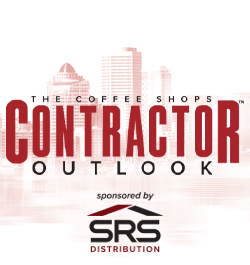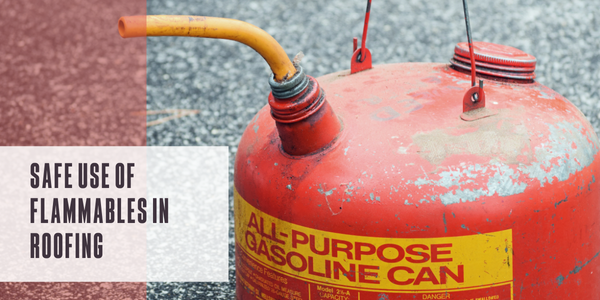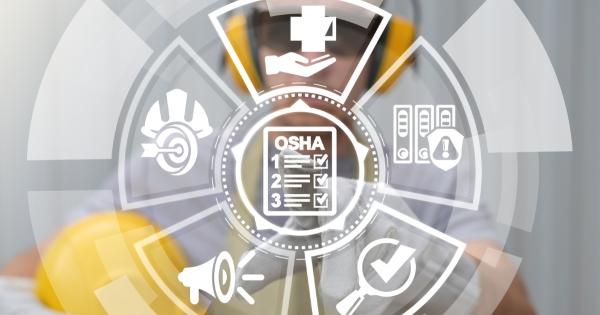UP TO THE MINUTE
Safe use of flammables in roofing
November 14, 2025 at 6:00 a.m.By Cotney Consulting Group.
With preparation, awareness and discipline, you can keep the spark in your work — not your job site.
From torch-down systems and asphalt kettles to power tools and cleaning solvents, roofing crews work around flammable liquids daily. These materials are essential to the job, but if not handled correctly, they can turn a routine day on the roof into a serious emergency. Gasoline, diesel, adhesives, primers and solvents all have hidden dangers. It's not just the liquid that poses a threat. It's the vapors that catch fire. One stray spark, a hot tool or even direct sunlight can be enough to ignite a dangerous blaze.
For roofing contractors, understanding the risks and following safety best practices when handling flammable liquids isn't just a good protocol; it's critical to protecting your crew, equipment and business.
What makes a liquid flammable?
A liquid is considered flammable if it can ignite at a relatively low temperature. Its flash point measures this, the lowest temperature at which it gives off enough vapor to ignite in air. Gasoline, for example, has a flash point of around -45°F, meaning it can release flammable vapors even in cold weather.
The key hazards come from:
- Vapors, not just the liquid itself
- Poor ventilation, which allows vapors to accumulate
- Ignition sources, such as tools, sparks, cigarettes or open flames
That means even a closed container sitting in the sun or an open can near a running generator could be a fire waiting to happen.
Common flammable liquids in roofing
Roofers routinely work with:
- Gasoline for generators and compressors
- Diesel fuel for heavy equipment
- Torch-down adhesives and primers
- Solvents and cleaning agents
- Paints and coatings
- Tar and asphalt products
These materials must be stored, used and disposed of carefully.
Storage: Safety starts before the job
Proper storage is the first step in preventing flammable liquid incidents.
Best practices include:
- Use only approved containers (with clear labels and sealed lids)
- Store containers in well-ventilated areas, away from direct sunlight and heat
- Keep them at least 10 feet away from ignition sources
- Separate flammables from oxidizers or incompatible materials
- Use flammable storage cabinets when working out of trailers or enclosed areas
Never store flammable liquids in makeshift containers like water bottles or paint cans. This invites confusion and uncontrolled spills.
Handling and usage on the jobsite
Safe handling requires crew awareness and consistency. Train all workers to:
- Inspect containers before each use and look for dents, leaks or loose caps
- Open and pour liquids carefully to avoid splashes and spills
- Use funnels and grounding straps when transferring larger quantities
- Ventilate enclosed areas to prevent vapor buildup
- Keep ignition sources away, no smoking, no open flames and no hot tools nearby
Always return containers to storage after use. Leaving an open can on the roof, especially in the sun, is a recipe for disaster.
Fire extinguishers: Ready and reachable
Every site handling flammable liquids should have Class B or ABC fire extinguishers nearby and marked. Place them:
- Within 10 to 15 feet of flammable liquid work zones
- Near hot work areas or generators
- Inside work trailers or vehicles carrying fuel
Train every worker on how to use a fire extinguisher with the PASS method:
Pull the pin
Aim at the base of the fire
Squeeze the handle
Sweep side to side.
Spill response and disposal
Spills can lead to both fire hazards and environmental fines. Here's how to manage them:
For small spills:
- Use absorbent pads or spill kits
- Ventilate the area
- Dispose of waste in approved containers labeled for hazardous materials
For larger spills:
- Evacuate the area
- Contact emergency responders or hazmat services
- Notify your supervisor immediately
Never wash flammable liquids down drains or onto the ground. They're hazardous to both people and the environment.
Train, review, repeat
Even experienced crews can become complacent. That's why routine training is essential. Cover topics like:
- Reading safety data sheets (SDSs) for each product
- Identifying flammable liquid labels and hazard symbols
- Knowing how to respond to spills or fire
- Proper use of PPE (gloves, eye protection, flame-resistant gear)
Make flammable liquid safety part of your onboarding and refresher training. Reinforce it during toolbox talks, especially before hot work or major project mobilization.
Fire safety is everyone's job
Flammable liquids are part of the roofing job but don't have to be a threat. Proper storage, thoughtful handling and a well-trained crew can prevent fires and injuries long before they start. Don't leave safety to chance or assume "someone else" will take care of it. Every person on your team plays a role in identifying risks and staying alert.
Because when it comes to flammable liquids, one careless moment can lead to devastating consequences. But with preparation, awareness and discipline, you can keep the spark in your work — not your job site.
Learn more about Cotney Consulting Group in their Coffee Shop Directory or visit www.cotneyconsulting.com.





















Comments
Leave a Reply
Have an account? Login to leave a comment!
Sign In